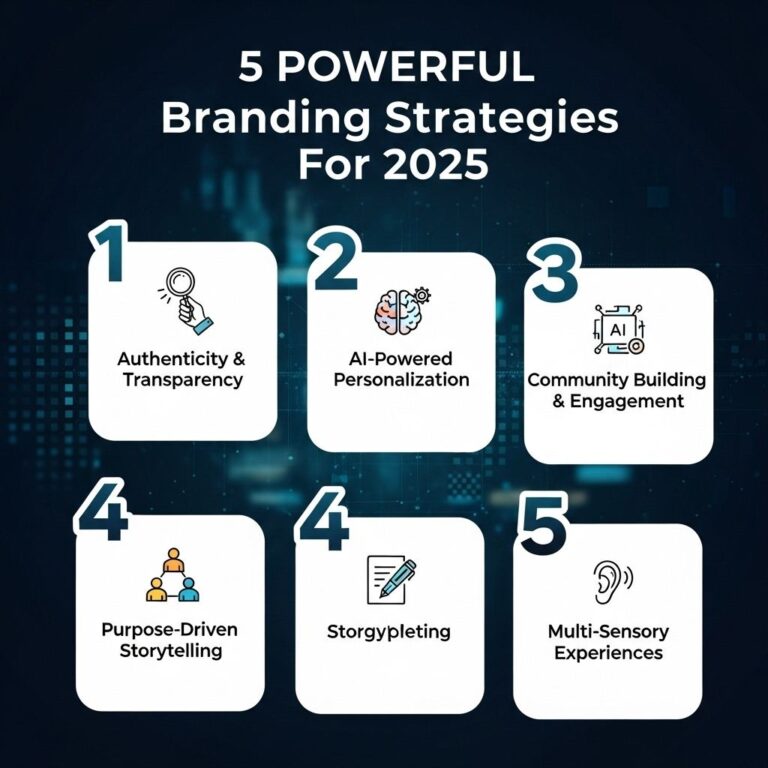In today’s competitive market, a strong brand identity is crucial for standing out and resonating with your target audience. A powerful brand identity not only represents your business visually but also communicates your core values and mission. This article will explore the essential elements of creating a compelling brand identity, from understanding your target audience to designing cohesive visual assets.
Table of Contents
Understanding Your Target Audience
The first step in creating a brand identity is to define and understand your target audience. Knowing who your customers are will help you tailor your brand message and design effectively. Here are some steps to identify your target audience:
- Conduct Market Research: Gather data on demographics, preferences, and behaviors.
- Create Customer Personas: Develop detailed profiles of ideal customers to visualize who you are targeting.
- Analyze Competitors: Study your competitors’ audiences to find gaps in the market.
Characteristics of Your Target Audience
When outlining characteristics, consider the following:
| Demographic | Characteristics |
|---|---|
| Age | 20-35 years |
| Gender | Both male and female |
| Location | Urban areas |
| Interests | Technology, sustainability |
Defining Your Brand Values and Mission
Once you know your audience, the next step is to define your brand’s core values and mission. This foundation will guide all your branding efforts:
- Identify Core Values: What principles drive your business? These could include sustainability, innovation, or customer-centricity.
- Create a Mission Statement: Summarize your brand’s purpose and commitment. Keep it concise yet impactful.
- Align Your Messaging: Ensure that your messaging reflects your values and mission in every aspect of your branding.
Example of a Strong Mission Statement
For instance, a company focused on eco-friendly products might have a mission statement like:
“To create sustainable, innovative products that enhance daily living while protecting our planet for future generations.”
Designing Your Visual Identity
Your visual identity is a critical component of your brand. This includes your logo, color palette, typography, and imagery. Here’s how to design an effective visual identity:
Logo Design
Your logo is often the first interaction customers have with your brand. It should be:
- Simple: Avoid overly complex designs.
- Memorable: Aim for a design that sticks in the mind of your audience.
- Versatile: Ensure it works across various media and sizes.
Choosing a Color Palette
Colors evoke emotions and can significantly influence perception. Consider the psychology of colors when selecting your palette. For example:
- Blue: Trust and professionalism
- Green: Growth and sustainability
- Red: Energy and urgency
Typography Selection
Your choice of fonts also plays a vital role in brand identity. Aim for:
- Readability: Select fonts that are easy to read.
- Personality: Choose fonts that align with your brand’s tone (serif for elegance, sans-serif for modernity).
Creating a Brand Voice
Your brand voice reflects your personality and how you communicate with your audience. To develop a consistent brand voice, follow these tips:
Defining Your Tone
Consider how you want your brand to sound. Should it be:
- Professional: Suitable for corporate audiences
- Casual: More relatable for a younger demographic
- Inspirational: Motivating customers to take action
Consistency Across Channels
Once you’ve defined your voice, ensure that it remains consistent across all platforms, including:
- Website content
- Social media posts
- Email newsletters
Implementing Brand Guidelines
To maintain consistency and cohesion in your branding efforts, create a set of brand guidelines that detail how every element of your brand should be used:
What to Include in Your Brand Guidelines
Your brand guidelines should cover:
- Logo Usage: Clear instructions on how to use the logo, including spacing and placement.
- Color Palette: Exact color codes for digital and print use.
- Typography: Approved fonts and examples of use.
- Imagery Style: Guidelines on photography styles and graphics.
Promoting Your Brand Identity
Once you have established your brand identity, it’s time to promote it effectively. Here are some strategies to consider:
Utilizing Social Media
Social media platforms provide an excellent opportunity to showcase your brand identity:
- Engagement: Interact with your audience through posts, stories, and comments.
- Visual Content: Utilize images, videos, and graphics that reflect your brand’s visual identity.
- Consistency: Maintain a uniform look and feel across all platforms.
Building a Website
Your website is often the first impression customers have of your business. Ensure it aligns with your brand identity:
- Visual Cohesion: Use your visual identity elements throughout the site.
- Clear Messaging: Communicate your brand’s values and mission succinctly.
- User-Friendly: Make navigation easy to enhance the user experience.
Monitoring and Evolving Your Brand Identity
Finally, it’s essential to monitor your brand identity continuously and adapt as necessary:
- Gather Feedback: Regularly solicit input from customers to understand their perceptions.
- Analyze Performance: Use analytics tools to track engagement and brand sentiment.
- Evolve with the Market: Stay updated on industry trends and be willing to adjust your branding strategy accordingly.
Creating a powerful brand identity is an ongoing process that requires careful planning, strategic implementation, and regular assessment. By understanding your audience, defining your values, designing a cohesive visual identity, and promoting it effectively, your brand can achieve lasting recognition and loyalty in the marketplace.
FAQ
What is a brand identity?
A brand identity encompasses all visual and verbal elements that represent a brand, including its logo, color palette, typography, and messaging.
Why is brand identity important?
Brand identity is crucial because it differentiates your business from competitors, builds customer loyalty, and establishes a professional presence in the market.
How do I define my brand’s mission and values?
To define your brand’s mission and values, start by identifying what your business stands for, your target audience, and the unique value you offer.
What elements should be included in a brand identity?
Key elements of a brand identity include a logo, color scheme, typography, imagery style, and a consistent tone of voice across all platforms.
How can I create a memorable logo for my brand?
To create a memorable logo, focus on simplicity, relevance to your brand, versatility for various uses, and timelessness to ensure it remains effective over time.
What role does consistency play in brand identity?
Consistency in brand identity helps reinforce recognition and trust with your audience, ensuring that all marketing materials align with your brand’s image.









